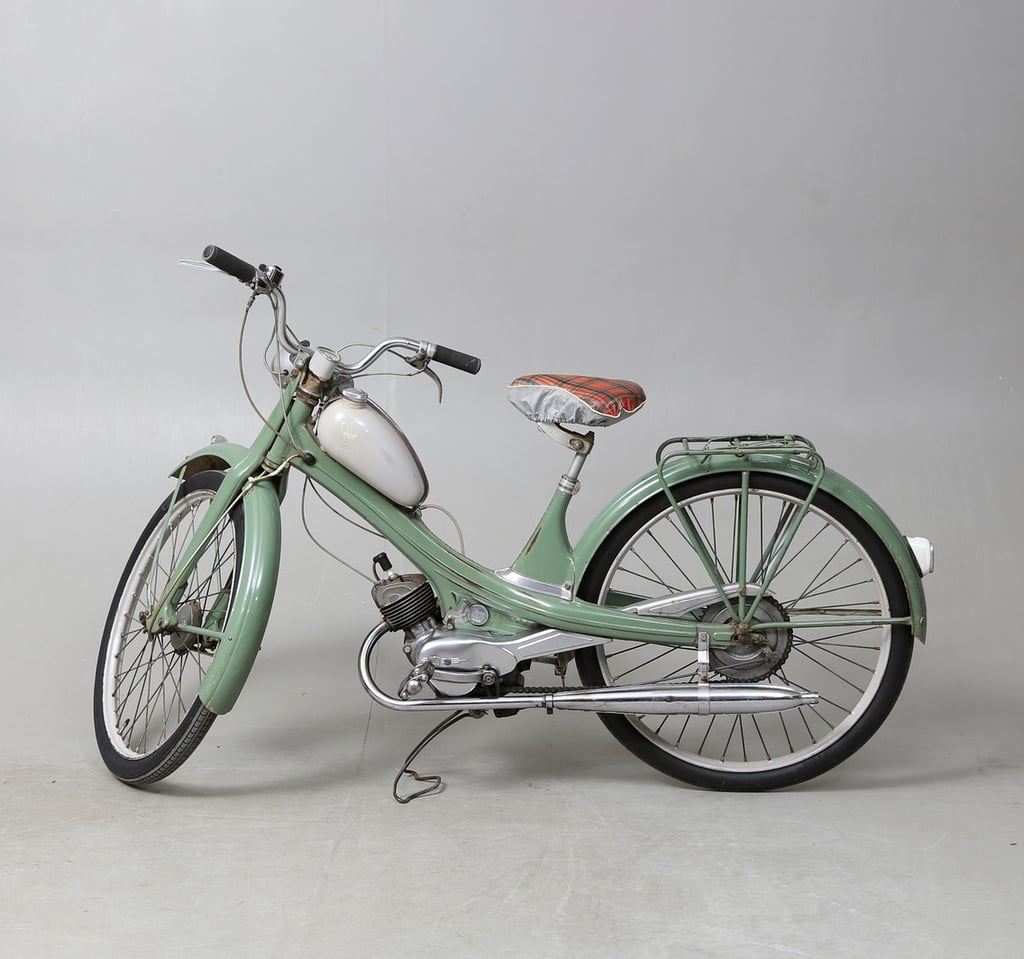NSU Quickly Moped: An Oxymoron If there ever was one
The article explores the history and impact of NSU Motorenwerke AG's 'Quickly' moped, which revolutionized the moped market with its technical advancements and cultural significance. The moped was introduced in 1953 and became a popular means of transportation, selling over a million units and inspiring several variants. It also gained a reputation for its performance in moped racing events and has since become a highly sought-after collectible. The 'Quickly' holds an illustrious cultural legacy in Germany and remains an iconic symbol of moped culture worldwide.
MOPEDSVINTAGE MOPEDSNSU 1950'SGERMANY TWO STROKE
11/3/20233 min read


NSU Motorenwerke and the Legacy of the 'Quickly' Moped: A Ride Through History
Historical Overview of NSU Motorenwerke
The origin of the moped, as we know it today, is entwined with the narrative of NSU Motorenwerke AG, a German manufacturer of vehicles. Founded in 1873 as a producer of knitting machines, NSU transitioned to manufacturing bicycles in 1884 due to the rising popularity of these two-wheelers. The name NSU sprouted out of their geographical location, representing the rivers Neckar and Sulm that encompassed the plant. 20th-century advancements spurred the production of NSU motorcycles. Their entrepreneurial flourish was momentarily stifled by the second world war, which saw NSU diversify into designing the esteemed Kettenkrad, an innovative half-tracked motorcycle. The post-war era, however, witnessed a resurgence of NSU's vehicular spirit, metamorphosing the landscape of personal commute with the introduction of the iconic NSU 'Quickly' moped.
Introduction of the 'Quickly' Moped
The NSU 'Quickly' streaked into the vehicle market in 1953, changing the panorama of moped production permanently. This moped had several distinct features contributing to its success: a streamlined frame, leading-link suspension, and a two-speed transmission, which made it particularly suited to the era's transportation needs. Perhaps its most distinctive feature was the ability to commence the engine and assist propulsion up challenging terrains. Not merely an instrument of commute, the 'Quickly' was a testament to German engineering, captivating consumer attention and accelerating moped production under the NSU flagship.
Technical Advancements of 'Quickly'
The 'Quickly' moped was a vessel of various technical strides for its time. The design of the moped itself was built with a pressed-steel single spar unit with a headset at the front. It also incorporated a mechanism for mounting the seat post and attaching the motor unit and the fuel tank. It had leading-link suspension at the front. The motor unit was essentially a 49 cc two-stroke engine, integrated with a two-speed transmission. This multi-faceted transmission allowed for a seamless engine start and adequate capacity for uphill maneuvers. The sheer innovation of the 'Quickly' marked its place in the annals of two-wheeler evolution.
Market Impact and Popularity of 'Quickly'
NSU's 'Quickly' left a lasting impression on the moped market. As a showcase of sophisticated engineering, it appealed not only to the economy market but also to a broad demographic of riders who regarded it as a valuable and convenient means of transport. The 'Quickly' not only popularized the moped concept but also revolutionized it. In the era following its introduction, more than a million 'Quicklys' were sold and several variants were produced, successfully penetrating the global moped market. The 'Quickly' was not just a moped - it was, and still is, representative of a transformative era in the history of transportation.
Cultural Significance of 'Quickly'
Apart from the commercial success, the 'Quickly' moped holds an illustrious cultural legacy, especially in Germany. The robust frameworks of the 'Quickly' painted a picture of reliability and practicality that resonated with German socioeconomic structure. It blurred the previously well-defined boundaries between different demographic strata within the rider community. The 'Quickly' became more than a means of transport – it evolved into an emblem of the changing tempo of the times. Across the world, it remains an iconic symbol of moped culture, representing a shift in societal norms in the mid-20th century.
NSU and Moped Racing
'Quickly' wasn't just admired for its design and functionality, but also for its performance on the race track. The 'Quickly' held its ground in moped racing events, and its design proved advantageous for competitive racing. While it's unclear how many victories or records the 'Quickly' secured, its participation in such events only bolstered its reputation. Track events also provided the platform for showcasing the 'Quickly's' capabilities to potential customers, thus expanding its market presence. As such, the name 'Quickly' became synonymous with moped racing, adding yet another feather to NSU's cap.
Collectibility and Enthusiast Communities of 'Quickly'
Today, over half a century since the last 'Quickly' model rolled off the NSU assembly line, these mopeds have taken on a new avatar – highly sought-after collectibles. From vintage vehicle enthusiasts to hardcore moped aficionados, the 'Quickly' has a dedicated follower base around the globe. Several enthusiast communities are active, exchanging information about parts, models, and restoration tips. This enduring cult status has not only helped preserve 'Quickly' models but has also kept the rich history of NSU Motorenwerke AG alive.
Personal Stories and Anecdotes about 'Quickly'
What truly brings the 'Quickly' moped back to life are the personal stories and firsthand experiences shared by enthusiastic owners across the world. These tales of novel adventures, challenging repairs, and thrilling races create a unique narrative that extends beyond its technical specifications or production history. This sort of testimony adds a distinct human touch, remolding the 'Quickly' from being an inanimate moped into a shared cultural heritage. While these stories may not have numerical metrics or marketing agendas, they remain the living pulse of the 'Quickly' legacy, narrating the enduring march of NSU's iconic moped.
